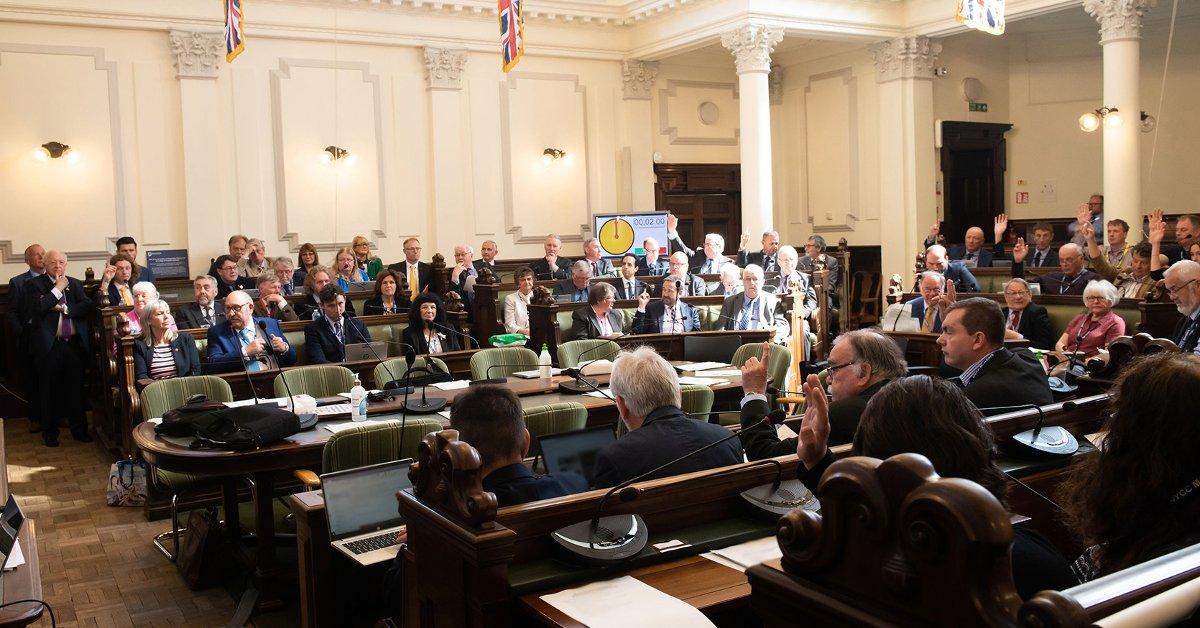Subscribe to trusted local news
In a time of both misinformation and too much information, quality journalism is more crucial than ever. By subscribing, you can help us get the story right.
- Subscription costs less than £1 a week with an annual plan.
Already a subscriber? Log in here.
03
Jul 2024
Electoral proposal could see ‘impossible’ rural divisions created

A proposal to equalise the number of residents elected members serve on North Yorkshire Council has been criticised amid claims it will create vast divisions which are “impossible” for councillors to properly represent.
Just 15 months after the launch of the unitary authority, its executive will on Tuesday (June 9) consider a proposal from a cross-party working group of councillors which is likely to result in some of the county’s rural divisions expanded and urban areas reduced in geographic size.
While the number of electors in the county by 2030 is forecast to rise by 7% to 517,344, the working group is recommending a council size of 89 members, one less than the current number, partly to keep down the cost of councillors to the taxpayer.
However, due to wide variations in the number of electors in each division when the boundaries were set up using district wards in 2021, keeping a similar number of councillors will mean some rural divisions being significantly expanded and some urban areas, such as the former Harrogate borough, seeing divisions reduced in geography.
At present, Wathvale and Bishop Monkton division, near Harrogate, has 7,283 electors, while Cayton division in Scarborough has just 3,711.
To increase large rural divsions such as Upper Dales, Wharfedale and Danby it will mean taking in numerous settlements across a wide area.
All the divisions, which are to be drawn up later this year, are set to be within ten per cent above or below the average of 5,813 electors.
An officer’s report to the meeting, which will consider putting the proposal before full council on July 24, underlines the review process "will have a significant impact on how the council operates and how councillors work".
The working group heard while some urban divisions are small in area, they have significant amounts of casework around regeneration, development and transport, but rural division councillors faced having many community meetings to attend, making it “logistically impossible."
Cllr John Weighell, chair of the working group behind the proposals, said all new councils had to have a review of their division boundaries and councillors had expressed “a wide variation in views” about whether there should be more or less than 90 elected members.
He said:
One member wants 72 councillors other members over 100. However, the only difference in work between the county and the unitary authority is the addition of planning.
What I’m working on is we will stick to the rules of the Boundary Commission very rigidly, which is plus or minus ten per cent from the average. This is not political, it’s about numbers and my aim is to have as little disruption of the electors as possible.”
Liberal Democrat councillor Philip Broadbank said he thought a rise in the number of elected members would be appropriate and his group would propose a larger number of councillors to full council.
He said:
We are the second largest council by area in the whole of the UK, but apart from metropolitan authorities like Birmingham and Leeds we would have one of the largest numbers of electors per councillor in the country.
The fewer councillors there are the worse it will be for the rural areas. If they have got big geographic divisions now, they will have even bigger ones, but that’s what the majority wanted to go along with.
Another working party member, Labour councillor Steve Shaw Wright, said he was in favour of the Boundary Commission independently deciding on the divisions, “taking away the local politics to try and make it as fair as possible”.
He said:
The residents of North Yorkshire have far greater concerns than what ward they live in, as long as they get decent representation.
0